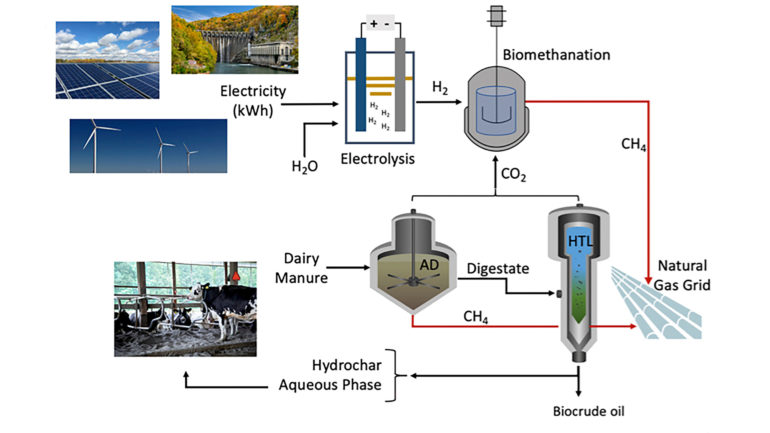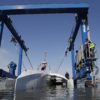Cornell University is developing a system to extract energy from cattle manure to meet the campus’s peak demands for heat in the winter months. In the Journal of Renewable and Sustainable Energy, scientists involved with the project give a detailed analysis of the issues required to make this work, including scientific, economic, and energy policy considerations.
The university is already involved in an initiative to develop renewable energy sources and services, with the goal of reducing its carbon footprint by 100% by 2035. These goals are proving difficult to achieve in cold regions, such as Ithaca, New York, where the university is located, since over six months of winter heating is needed for its buildings and laboratories.
Heating needs are a significant portion of Cornell’s energy usage, and a challenge occurs at peak heating times. The university is developing a geothermal project that provides heat from hot water extracted 3-4 kilometers underground. This will provide adequate base-level heating but would be economically unattractive to meet peak demand.
To meet the need for more heat in the depths of winter, the investigators are proposing a system to convert cattle manure from the school’s dairy farms, which house 600 cows, to methane and other products. The method employs a three-stage process, where the manure is first biologically digested with microbes to produce biogas, a mixture of carbon dioxide and methane.
This is followed by a second stage that converts the digested manure into a type of biocrude oil plus a substance called hydrochar that makes a good soil amendment.
The final stage combines the carbon dioxide generated in the first step with hydrogen gas produced by renewable electrolysis of lake water to biologically generate renewable natural gas, RNG. This final product can be injected into the natural gas grid for New York state, in much the same way electricity from wind turbines and solar panels is returned to the electrical grid.
“The proposed system will produce about 909 million liters of RNG per year,” said author Nazih Kassem. “This can provide 97% of the total annual peak heating demand. The remainder can be met by purchasing natural gas, increasing Cornell’s dairy herd size, or using campus eateries’ food wastes for co-digestion. Adding 19 more dairy cows would result in enough RNG production to meet the average annual peak heating demand.”
The investigators’ detailed economic analysis revealed the importance of state policies regarding the RNG price and other issues.
“If New York state were to adopt policies to create a carbon market and enable competitive RNG pricing, then the proposed biomass peak heating system would show profitability,” Kassem said.
New York State can achieve 2050 carbon goals: Here’s how
More information:
“Sustainable district energy integrating biomass peaking with geothermal baseload heating: A case study of decarbonizing Cornell’s energy system,” Journal of Renewable and Sustainable Energy (2020). aip.scitation.org/doi/10.1063/5.0024841
Provided by
American Institute of Physics
Citation:
Cornell University to extract energy from manure to meet peak heating demands (2020, December 22)
retrieved 22 December 2020
from https://techxplore.com/news/2020-12-cornell-university-energy-manure-peak.html
This document is subject to copyright. Apart from any fair dealing for the purpose of private study or research, no
part may be reproduced without the written permission. The content is provided for information purposes only.



